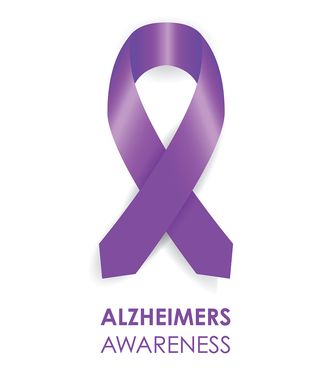Purpose of the 21-2680:
The VA form 21-2680 “Examination for Housebound Status or Permanent Need for Regular Aid and Attendance” is used to document the level of care required by a claimant or a claimant’s dependent. The VA form 21-2680 is completed by a physician based on his/her medical evaluation of the patient. The importance of documenting the level of care is two-fold:
- To support a claim for additional pension above and beyond the base level AND
- To support the need for certain medical expenses.
There are three levels of non-service-connected pension that a claimant may qualify for: base pension, housebound, and aid and attendance. The base pension is the lowest pension that a claimant may be awarded. Additional funds are granted if you can document that the claimant is housebound, and even more funds go to those requiring another individual to assist with at least two activities of daily living (ADLs). The VA also looks at level of care when considering medical expenses to offset income. Therefore, the VA form 21-2680 should document the level of care that justifies the medical expenses being declared. This applies to the claimant’s dependents as much as the claimant. So for example, the VA will not consider the assisted living facility expense for a veteran’s spouse unless a form 21-2680 is also completed for the spouse indicating the need for the facility to assist with at least two ADLs.
The VA form 21-2680 is relatively short (two pages) and is to be completed by a third party – that is, a physician. All you need to complete the form is the veteran’s and claimant’s – if other than the veteran – name(s), Social Security number(s), and address. When you are completing the form for a living veteran’s spouse or other dependent, it is that person's name that appears in the field that requests the name of the claimant, even though, strictly speaking, the claimant is the living veteran. When downloaded from the VA website at http://www.va.gov/vaforms/, the 21-2680 has no separate instruction pages. It does state its purpose near the top of the first page: “The purpose of this examination is to record manifestations and findings pertinent to the question of whether the claimant is housebound (confined to the home or immediate premises) or in need of the regular aid and attendance of another person.”
Despite the fact that you are not completing this form yourself, you should still review all 21-2680s once completed by the physician and before submitting to the VA so that you can confirm that every field is answered and that further explanation is provided when required by the instructions. Form 21-2680 should be signed by a physician because the signatures of nurse practitioners or physician’s assistants are not acceptable. Errors and omissions of this type should be corrected before filing the claim or you may risk a delay. Most importantly, you should also confirm whether the form 21-2680 does in fact document the claimant’s housebound status or the need for aid and attendance.
Housebound status is documented by the physician’s answer to field 33, “Describe how often per day or week and under what circumstances the claimant is able to leave the home or immediate premises.” A clear indication of housebound status would include a statement from the physician such as, “Patient no longer drives and relies solely on caregivers to attend necessary doctor appointments.” The VA form 21-2680 will support the need for aid and attendance, if it provides clear evidence that the claimant needs assistance with at least two ADLs. Acceptable ADLs are bathing/showering, dressing, eating, getting in/out of bed or chair, and using the toilet. The following are not considered ADLs by the VA: walking, medication administration, meal preparation, and protective environment only. This is very important in the case of independent living facilities, the expense of which will not be considered by the VA unless the 21-2680 documents that such a facility provides a protective environment and custodial care that is supplemented by a third party providing the assistance with two or more ADLs. Otherwise the cost of the independent living facility may be considered merely rent and thus not a deductible medical expense. A clear indication of the need for aid and attendance would be input into box #25, where it asks if the claimant needs a nursing home. The answer to that question may be “no.” However, the physician should write out to the side something like, “Patient needs to live at ABC facility for a protected environment, custodial care and assistance with ADLs.”
Because of the importance of using the right language on the VA form 21-2680, the software developed by Lawyers with Purpose to complete VA claim forms produces a sample VA form 21-2680 with recommended verbiage and other guidance for the most important fields. This sample can be provided along with a blank form to the doctor for guidance with instructions that can be used if the doctor feels it applies. If the doctor does not believe that it applies, it may be that your client simply does not qualify for as high a level of care. You may still be able to file for base pension or plan to follow up with the client periodically to check if medical needs have increased.
What to file with the 21-2680
Other than the regular VA application forms, nothing else is required to be filed with this form. However, if you feel that your completed VA form 21-2680 is weak in areas, but you believe that your client’s medical condition warrants aid and attendance, you can add supporting medical records. This form should be submitted as part of a fully developed claim in order to expedite the processing. As a reminder, you may not need to file a VA form 21-2680 if your claimant is only seeking base pension. And a 21-2680 does not need to be filed if you are filing the VA form 21-0779 because the latter documents that the claimant is in a nursing home and requires skilled nursing care, and thus by definition has a permanent need for regular aid and attendance. This will however not stop some VA adjudicators from requesting the 21-2680 form nonetheless, so we generally request all of our VA clients to get one completed as soon as they have retained us – particularly because it can take some time to get the completed form back from the doctor.
Always remember that this form can be used for both supporting a claim for higher levels of pension and the need for certain medical expenses. Keep those two purposes in mind when you are deciding whether or not the VA form 21-2680 needs to be included as part of your VA claim, and when reviewing their completion by a third party to make sure there are not unexpected results with your claim.
If you want to see first hand how the LWP-CCS Drafting Software works with VA form 21-2680 – along with the thousands of other things it has to offer you're estate and elder law practice – click here to schedule a live software demo.
By Sabrina A. Scott, Paralegal, The Elder & Disability Law Firm of Victoria L. Collier, PC and Director of VA Services for Lawyers With Purpose.
Victoria L. Collier, Veteran of the United States Air Force, 1989-1995 and United States Army Reserves, 2001-2004. Victoria is a Certified Elder Law Attorney through the National Elder Law Foundation; Author of “47 Secret Veterans Benefits for Seniors”; Author of “Paying for Long Term Care: Financial Help for Wartime Veterans: The VA Aid & Attendance Benefit”; Founder of The Elder & Disability Law Firm of Victoria L. Collier, PC; Co-Founder of Lawyers with Purpose; and Co-Founder of Veterans Advocate Group of America.











